Best Tools to Insert Data to MongoDB Without Duplicates to Buy in December 2025

Mastering MongoDB 7.0: Achieve data excellence by unlocking the full potential of MongoDB


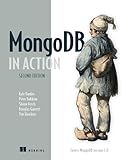
MongoDB in Action: Covers MongoDB version 3.0


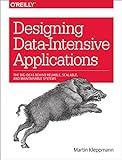
Designing Data-Intensive Applications: The Big Ideas Behind Reliable, Scalable, and Maintainable Systems


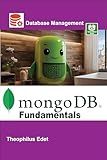
MongoDB Fundamentals (Mastering Database Management Series)


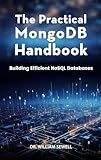
The Practical MongoDB Handbook: Building Efficient NoSQL Databases


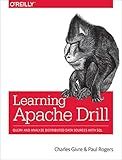
Learning Apache Drill: Query and Analyze Distributed Data Sources with SQL



Big Data and Analytics: The key concepts and practical applications of big data analytics (English Edition)



Big Data: Principles and best practices of scalable realtime data systems


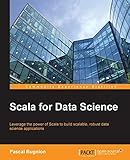
Scala for Data Science: Leverage the power of Scala with different tools to build scalable, robust data science applications



Tips for advanced business analytics and data insights in Python - An analysis tool for data-driven decision making that combines Pandas and Power BI - (Japanese Edition)


To insert data into MongoDB without duplicates, you can use the insertOne or insertMany methods along with certain strategies to prevent duplication. One effective approach is to define a unique index on the fields that should be unique across documents. When a unique index is in place, MongoDB will automatically reject any insertions or updates that would result in duplicate values for those fields. If you're inserting data programmatically and want to ensure that duplicates are not inserted, you can first perform a query to check if a document with the same unique value already exists before proceeding with the insertion. Additionally, you can use the upsert option in the updateOne or updateMany methods, which updates an existing document if it matches a query or inserts it if it does not exist, thereby avoiding duplication. Another approach to handle large volumes of data is to use the bulkWrite method with updateOne operations and upsert set to true, which also helps prevent duplicate entries when performing bulk operations.
What is the purpose of MongoDB's unique option?
The purpose of MongoDB's unique option is to enforce uniqueness for the values in a specified field or combination of fields within a collection. This is implemented by creating a unique index on the field(s). When an index is created with the unique: true option, MongoDB ensures that no two documents in the collection can have the same value for the indexed field(s).
The unique index is useful for a variety of reasons:
- Data Integrity: It prevents duplicate entries for the field(s), ensuring that every document has a distinct value. This is particularly useful for fields that are intended to have unique identifiers, such as email addresses, usernames, or any other field that needs to be a distinct key for a document.
- Data Validation: It provides an additional layer of validation at the database level, which complements application-level validations.
- Query Performance: Similar to other indexes, unique indexes can improve query performance by allowing faster searches for documents based on the unique fields.
- Ensuring Consistency: By enforcing uniqueness, you ensure data consistency, especially when working with distributed systems or applications where multiple instances might try to insert duplicate data concurrently.
To create a unique index, you can use the createIndex method. For example, to ensure the email field of documents in a users collection is unique, you would run:
db.users.createIndex({ email: 1 }, { unique: true });
Utilizing unique indexes appropriately helps maintain the integrity and efficiency of your database operations.
How to use upsert in MongoDB?
In MongoDB, "upsert" is a compound operation that stands for "update" and "insert." It allows you to either update an existing document or insert a new document if none matches the update criteria.
Here's a step-by-step guide on how to use upsert in MongoDB:
Using MongoDB Shell
- Ensure You Have Proper Setup: You should have MongoDB installed and running. Also, connect to your database using the MongoDB shell or a GUI like MongoDB Compass.
- Syntax for Upsert in updateOne or updateMany Operations: The upsert option can be used with either updateOne or updateMany methods. Upsert is usually set in the options argument when invoking an update operation. db.collection.updateOne( { filterField: filterValue }, // The filter criteria { $set: { updateField: updateValue }, $setOnInsert: { anotherField: anotherValue } // Optional, used during insertion only }, { upsert: true } );
- Example with updateOne: Let's say you have a users collection and want to update a document with username: "johndoe". If it doesn't exist, you want to insert a new document with some fields. db.users.updateOne( { username: "johndoe" }, { $set: { lastLogin: new Date() }, $setOnInsert: { createdAt: new Date(), email: "johndoe@example.com" } }, { upsert: true } ); In this example: If a document with username: "johndoe" exists, its lastLogin field will be updated. If it doesn't exist, a new document with username, lastLogin, createdAt, and email will be inserted.
- Using updateMany: The syntax for updateMany follows the same pattern. It can be used when multiple documents might be matched by the filter, although the upsert functionality essentially adds one document if no match is found.
Using Mongoose (ODM for MongoDB in Node.js)
If you are using Mongoose, the syntax changes slightly because it's an Object Document Mapper (ODM), and it uses a higher-level API.
Model.updateOne( { filterField: filterValue }, { $set: { updateField: updateValue } }, { upsert: true } ).exec();
Important Notes
- Atomicity: Upserts are atomic; the operation will ensure either an update or insert, not both.
- Performance: Consider the performance implications if you are using upsert frequently, especially with large datasets.
- SetOnInsert: The $setOnInsert operator is used to add fields that should be set only during an insert, not an update.
By using the upsert option effectively, you can simplify many common tasks where you want to ensure the presence of a document and also keep it updated.
What is the use of the '$set' operator in MongoDB?
In MongoDB, the $set operator is used to update the value of a field in a document. If the field does not exist, $set will add the field with the specified value. This is particularly useful when you want to modify specific fields within a document without affecting other fields. The $set operator can be used in conjunction with the updateOne, updateMany, or findOneAndUpdate methods to update documents in a collection.
Here’s a simple example of how the $set operator is used:
Suppose you have a collection called users, and a document in this collection looks like this:
{ "_id": 1, "name": "Alice", "age": 25, "email": "alice@example.com" }
To update Alice's email address, you would use the $set operator as follows:
db.users.updateOne( { _id: 1 }, { $set: { email: "alice.new@example.com" } } )
After executing this update, the document will be:
{ "_id": 1, "name": "Alice", "age": 25, "email": "alice.new@example.com" }
In summary, use $set to modify specific fields within documents while leaving other fields unchanged. It's a powerful way to perform updates without overwriting entire documents.
How to find duplicates in a MongoDB collection?
Finding duplicates in a MongoDB collection involves identifying documents that have the same field values. You can achieve this using the aggregation framework, which is powerful for processing and analyzing data. Here’s a step-by-step guide on how to find duplicates based on one or more fields:
Using the Aggregation Framework
Assume you have a collection called myCollection and you want to find duplicates based on a specific field, fieldName.
- Find Duplicates Based on a Single Field: To find duplicates based on a single field, you can use the $group stage to group the documents by that field, and then use the $match stage to filter groups with more than one document: db.myCollection.aggregate([ { $group: { _id: "$fieldName", count: { $sum: 1 }, docs: { $push: "$$ROOT" } // Store all documents in this group } }, { $match: { count: { $gt: 1 } // Filter where count is greater than 1 } } ]) This aggregation will result in a list of groups where each group contains documents having the same fieldName value.
- Find Duplicates Based on Multiple Fields: If you need to find duplicates based on multiple fields, you can modify the $group stage to use a compound key: db.myCollection.aggregate([ { $group: { _id: { field1: "$field1", field2: "$field2" }, count: { $sum: 1 }, docs: { $push: "$$ROOT" } // Store all documents in this group } }, { $match: { count: { $gt: 1 } } } ]) Replace field1 and field2 with the actual field names you are interested in.
Additional Considerations
- Performance: Be mindful that these queries can be resource-intensive, especially on large datasets. You might want to consider indexing the fields you are grouping by to improve performance.
- Partial Results: For a large data set, if you are only interested in a sample of duplicate documents, you can use $limit after $match to limit the number of results.
- Shell vs Application: While running these queries in the Mongo shell is useful for testing and quick checks, you should integrate similar logic within your application code if you need to handle duplicates programmatically.
This approach will help you identify duplicates in a MongoDB collection effectively.
How to handle duplicates in MongoDB using scripts?
Handling duplicates in MongoDB typically involves identifying, removing, or updating duplicate documents according to specific criteria. You can use scripts to automate these processes. Here's a general approach using JavaScript, which can be executed in the MongoDB shell or incorporated into a Node.js application:
Step 1: Identify Duplicates
Firstly, you need to determine what makes a document a duplicate. For example, you might consider documents duplicates if they have the same value in certain fields.
// Connect to your MongoDB database use yourDatabase;
// Identify duplicates based on a unique field or a set of fields var pipeline = [ { $group: { _id: { field1: "$field1", field2: "$field2" }, // Define fields to check for duplicates count: { $sum: 1 }, docs: { $push: "$_id" } } }, { $match: { count: { $gt: 1 } // Keep only groups with duplicates } } ];
var cursor = db.yourCollection.aggregate(pipeline);
cursor.forEach(function (doc) { print(`Duplicate found: ${JSON.stringify(doc)}`); });
Step 2: Remove Duplicates
Once duplicates are identified, choose how to handle them. Often, you want to keep one instance of each duplicate group and remove the rest.
cursor.forEach(function (doc) { // Keep one document and remove the rest var docsToRemove = doc.docs.slice(1); // This keeps the first document
db.yourCollection.deleteMany({ "\_id": { $in: docsToRemove } });
});
Step 3: Optional - Update Duplicates
If you want to consolidate information from duplicate documents rather than simply deleting them, you might opt to update one document with data from others before deletion.
cursor.forEach(function (doc) { // Assuming you want to merge data from duplicates into the first document var mainDocId = doc.docs[0]; var docsToMerge = doc.docs.slice(1);
docsToMerge.forEach(function (duplicateId) {
var duplicateDoc = db.yourCollection.findOne({ "\_id": duplicateId });
// Example: Merge data fields into the main document
db.yourCollection.updateOne(
{ "\_id": mainDocId },
{
$set: { "fieldToMerge": duplicateDoc.fieldToMerge } // Use your logic here
}
);
});
// Now remove the merged documents
db.yourCollection.deleteMany({ "\_id": { $in: docsToMerge } });
});
Important Considerations
- Backup: Always back up your data before performing bulk delete or update operations.
- Test: Run your scripts on a subset of your data to ensure they perform as expected.
- Indexes: Consider setting unique indexes on fields to prevent future duplicates.
- Performance: Large collections might require optimization or processing in batches.
By adapting these scripts to fit your specific needs, you can efficiently handle duplicates in your MongoDB collection.
What is MongoDB's schema design approach?
MongoDB’s schema design approach is quite flexible and is tailored to leverage the advantages of its document-oriented database model. The approach typically involves a few key principles:
- Document Model: MongoDB uses a document-based model, where data is stored in BSON (Binary JSON) format. Each document is a self-contained unit of data, often mirroring a JSON structure. This model supports storing complex data types, nested documents, and arrays, making it easy to represent rich data structures.
- Denormalization: Unlike traditional relational databases which emphasize normalization to avoid data redundancy, MongoDB often encourages a denormalized data model. This can mean embedding related data within a single document to optimize read performance, as all the required data can be fetched with a single query. This strategy is particularly useful in scenarios where read operations are more frequent than write operations.
- Schema Flexibility: MongoDB is a schema-less database, meaning each document in a collection can have a different structure. This flexibility allows for evolving data models without the need for migration scripts to alter table structures, which is particularly advantageous in agile development environments.
- Data Modeling: In designing schemas, it’s essential to consider application query patterns. This involves analyzing how data will be queried and updated to optimize for performance. For example, if certain data is always accessed together, embedding it within the same document might improve performance.
- Referencing: MongoDB supports references, similar to foreign keys in relational databases, where one document contains the ID of another document. This approach can be used when embedding would lead to large and unwieldy documents, or when data needs to be shared across documents.
- Trade-offs of Embedding and Referencing: Choosing between embedding and referencing involves trade-offs between consistency, storage, and operational performance. Embedded documents provide atomic updates and reads, while references can reduce document size and allow for related documents to grow independently.
- Indexes: MongoDB supports indexing to improve query performance, and schema design should consider the types of queries that will be executed to create efficient indexes.
- Sharding: For distributed deployments, MongoDB’s schema design should consider sharding strategy-deciding on a shard key that evenly distributes data across shards while minimizing cross-shard queries.
- Capped Collections and TTL: For specific use cases like log storage or expiring session data, MongoDB provides options like capped collections (fixed-size collections) and TTL (time-to-live) indexes to manage data lifecycle.
When designing a schema in MongoDB, it’s crucial to consider the specific requirements and constraints of the application to effectively balance the benefits of MongoDB's flexibility with the desired performance and scalability.
